Antwerp is the city that more than any other tells the story of the life, art and genius of Peter Paul Rubens (Siegen, 1577 - Antwerp, 1640) , the greatest Flemish painter of the seventeenth century and one of the absolute protagonists of European art history. Walking through its streets, one can still feel the breath of that golden age when the city was a crossroads of trade, culture and innovation, and Rubens was a kind of living symbol of it. Here the artist lived, worked, loved and left an indelible mark, not only through his masterpieces, but also through his role as an intellectual, collector, diplomat and distinguished citizen.
To visit Antwerp in the footsteps of Rubens is to immerse oneself in a universe of colors, emotions and stories that are interwoven among sumptuous palaces, monumental churches and unique museums. From the beating heart of the city, with its magnificent cathedral, to the churches where Rubens left some of his most famous canvases, to his house-museum, a treasure trove of memories and testimonies, each place tells a different aspect of his personality and art. Not only that: thanks to institutions such as the Plantin-Moretus Museum and the KMSKA, it is possible to understand the cultural and social context that formed the backdrop to his artistic parabola, discovering links with other great protagonists of the time. This itinerary, which touches ten emblematic places, is designed for those who want to get to know Rubens not only as a painter, but as a man of his time, a protagonist of an important season in the history of European art. It is a journey that spans history and still fascinates and inspires anyone who is guided by the beauty and power of art. Here then are the ten places to visit in Antwerp to get to know Rubens.
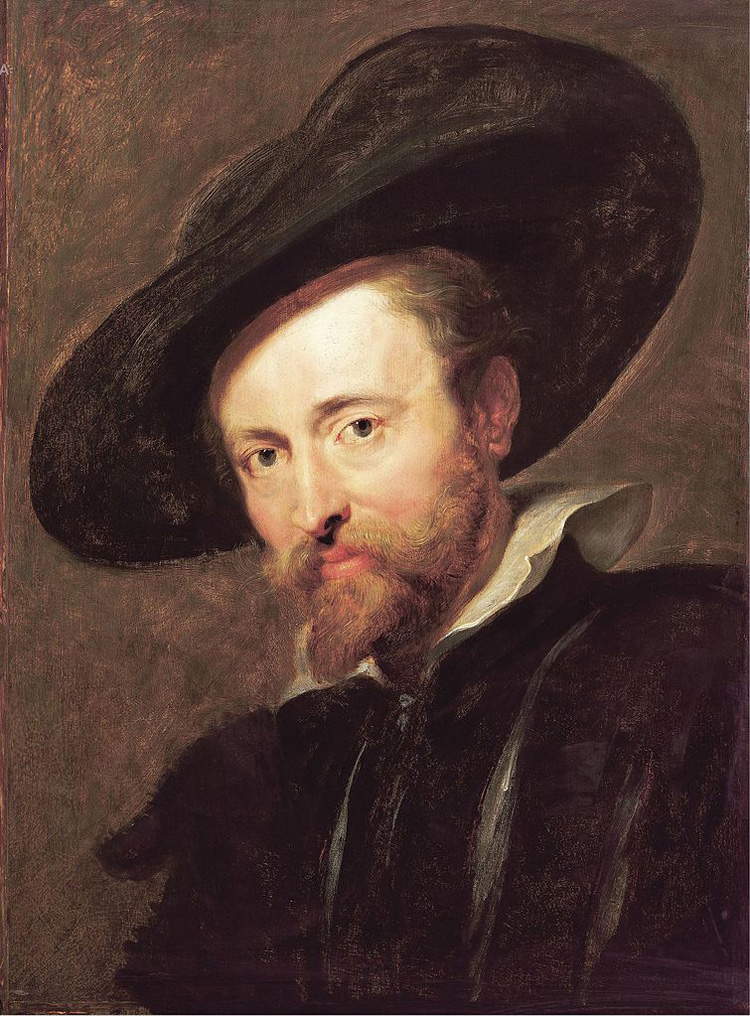
Rubens’ house can be taken as the starting point for the itinerary, although it is currently closed for restoration. The Rubenshuis is the beating heart of the Rubens myth in Antwerp. Here, in the house that the artist bought in 1610 and transformed into a sumptuous studio-residence, you can feel the atmosphere in which some of his most famous masterpieces were born. The palace, inspired by models of Italian architecture, testifies to the refined and cosmopolitan taste of Rubens, who wanted to recreate in his city an artistic microcosm worthy of the great European courts. Today the Rubenshuis is a museum that preserves original works, personal objects, period furniture and a rich collection of paintings by Rubens (such as the splendid Self-Portrait, perhaps his most intimate) and his contemporaries. Walking through the rooms, one discovers the artist’s more intimate side, his relationship with family, friends and collaborators, as well as his extraordinary ability to combine art, life and worldliness. The garden, designed by Rubens himself, is an oasis of peace that reflects the ideal of harmony between nature and culture, while the atelier reveals the secrets of his workshop, the nerve center of Baroque painting production. To visit the Rubenshuis is to enter the everyday life of a genius, grasping the complexity of a figure who was at once artist, entrepreneur and man of the world.
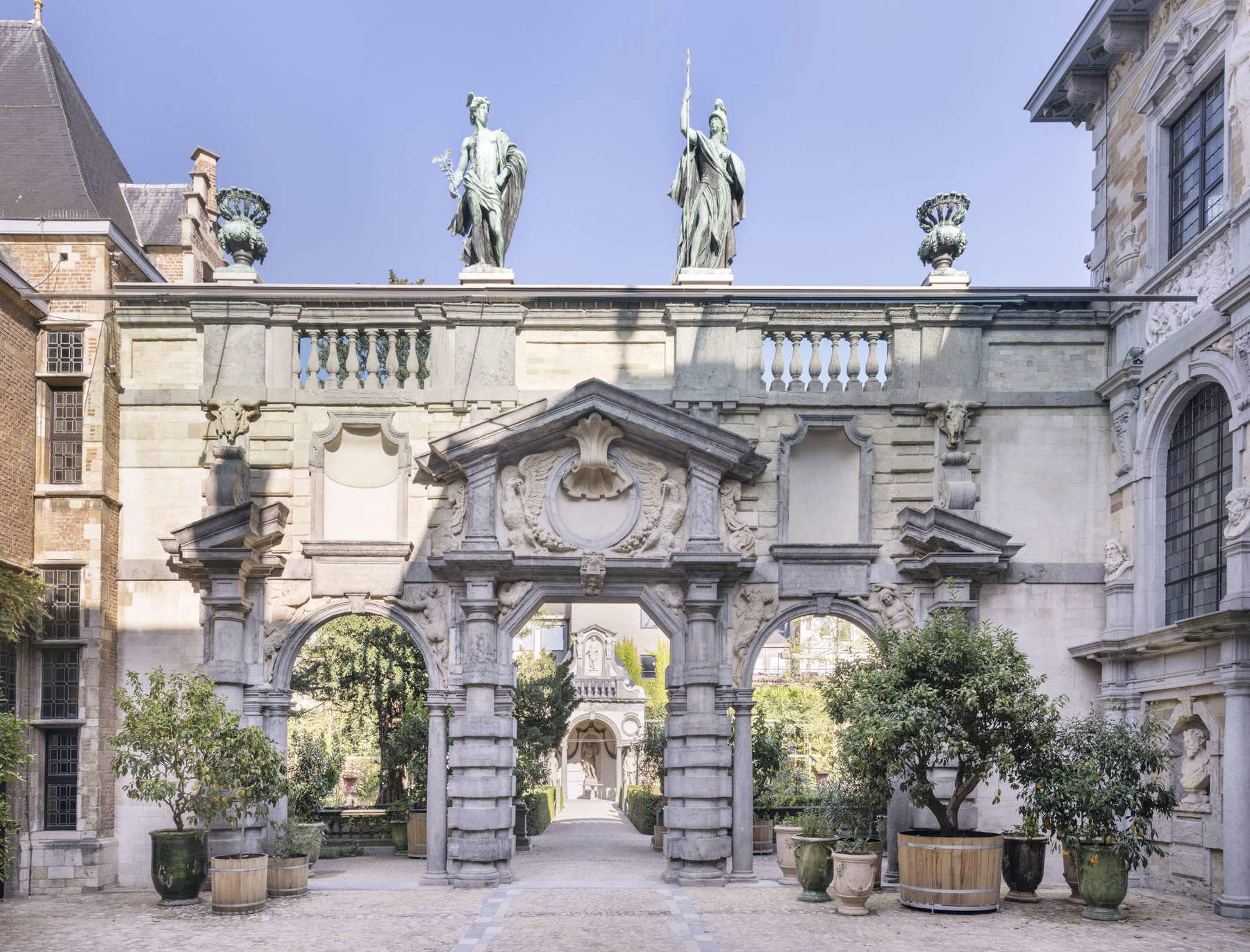
The Cathedral of Our Lady is the spiritual and artistic symbol of Antwerp and one of the most representative places of Rubens’ presence in the city. It houses no less than four of the artist’s masterpieces: theRaising of the Cross (1610-1611), the Resurrection triptych (1611-1612), the Deposition triptych (1611-1614), and theAssumption of the Virgin (1626). These are works that marked a turning point in the history of European painting. The cathedral, with its imposing Gothic naves and historiated stained glass windows, provides a majestic setting to admire the narrative power, chromatic sensitivity and theological depth of Rubens’ canvases. Here we fully grasp the artist’s ability to dialogue with architecture and transform sacred space into a setting of emotion and light. Rubens’ presence in the cathedral testifies to his role as an absolute protagonist of Antwerp’s religious and cultural life, but also to his ambition to measure himself against the great masters of the past and to leave a lasting legacy to the city.
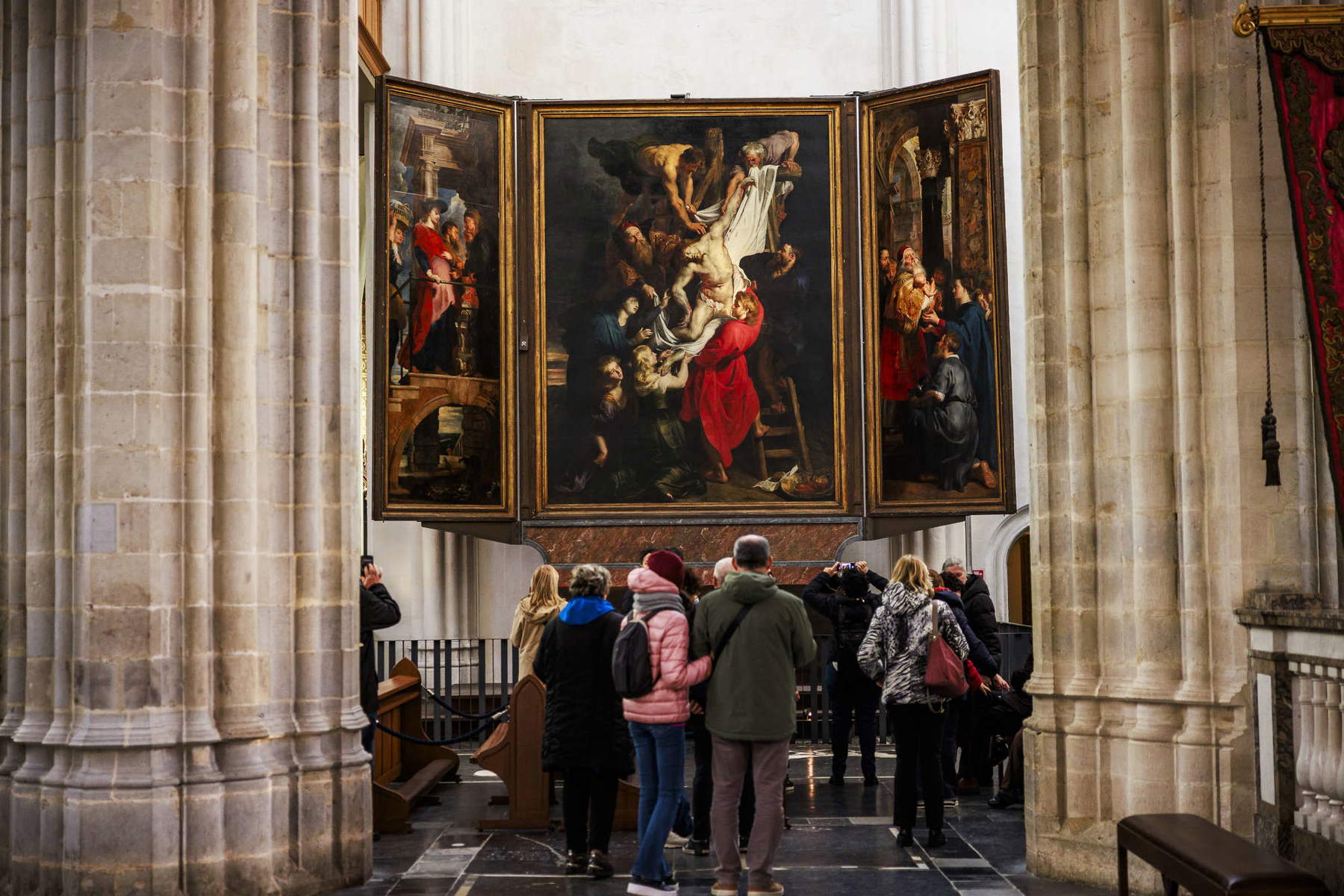
The Plantin-Moretus Museum is a unique place in the world that tells the story of European printing and publishing through the stories of the Plantin-Moretus family, friends and patrons of Rubens. Here, among ancient presses, rare books and precious manuscripts, one discovers the central role that printmaking culture played in the development of Flemish art. Rubens, a friend of Balthasar Moretus (both of them, interestingly, met as children at school, when they studied in the Latin class of master Rumoldus Verdonck in the Cathedral school), was linked to this dynasty of printers not only by professional relations, but also by a deep friendship: he produced frontispieces, illustrations and drawings for them, helping to spread his style throughout Europe. The museum, now a UNESCO heritage site, allows visitors to immerse themselves in the atmosphere of a seventeenth-century printing house, admiring the first editions illustrated by Rubens and understanding how his art dialogued with the world of the printed word. The visit also offers an opportunity to explore the private rooms of the Moretus family, discovering a universe of art collections, everyday objects and evidence of the intellectual life of the time.
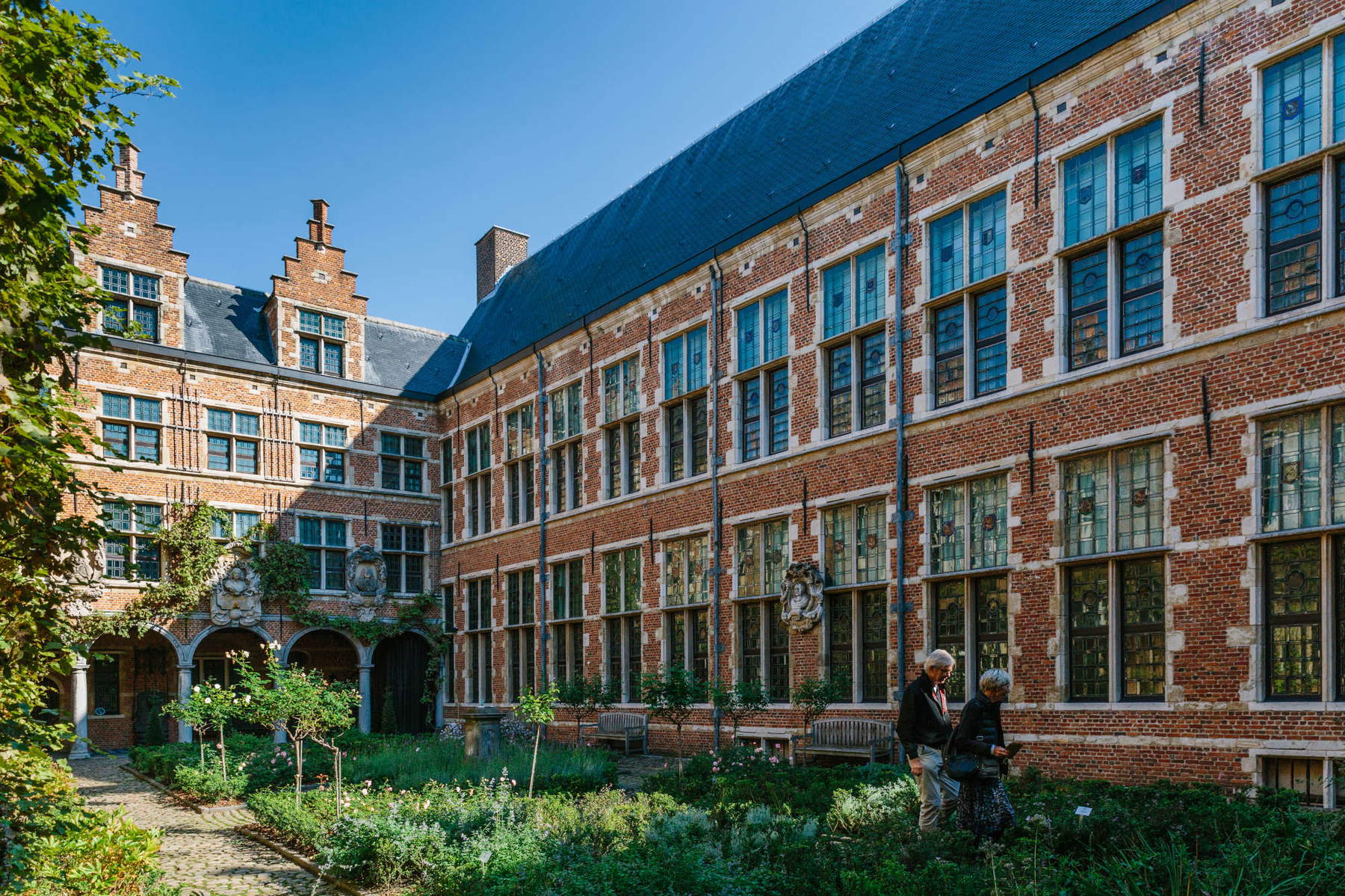
The Church of St. Charles Borromeo is one of the most outstanding examples of Baroque architecture in Antwerp and a place closely associated with the figure of Rubens. The artist collaborated on the decoration of the church, creating numerous canvases for the altars, many of which were unfortunately lost in a fire in 1718 (and according to tradition also designing the facade). Rubens had been able to transform the sacred space into an immersive experience: the cycle of frescoes made from his drawings in fact decorated the entire church. The church of San Carlo Borromeo represents the culmination of the collaboration between artists, artisans and patrons in the creation of a total work, in which art, faith and spectacle are inextricably blended. A work by Rubens, the Return of the Holy Family, donated in 1620 to the church by the mayor of Antwerp, Nicolaas Rockox, who was a friend of the painter, is also still found here.
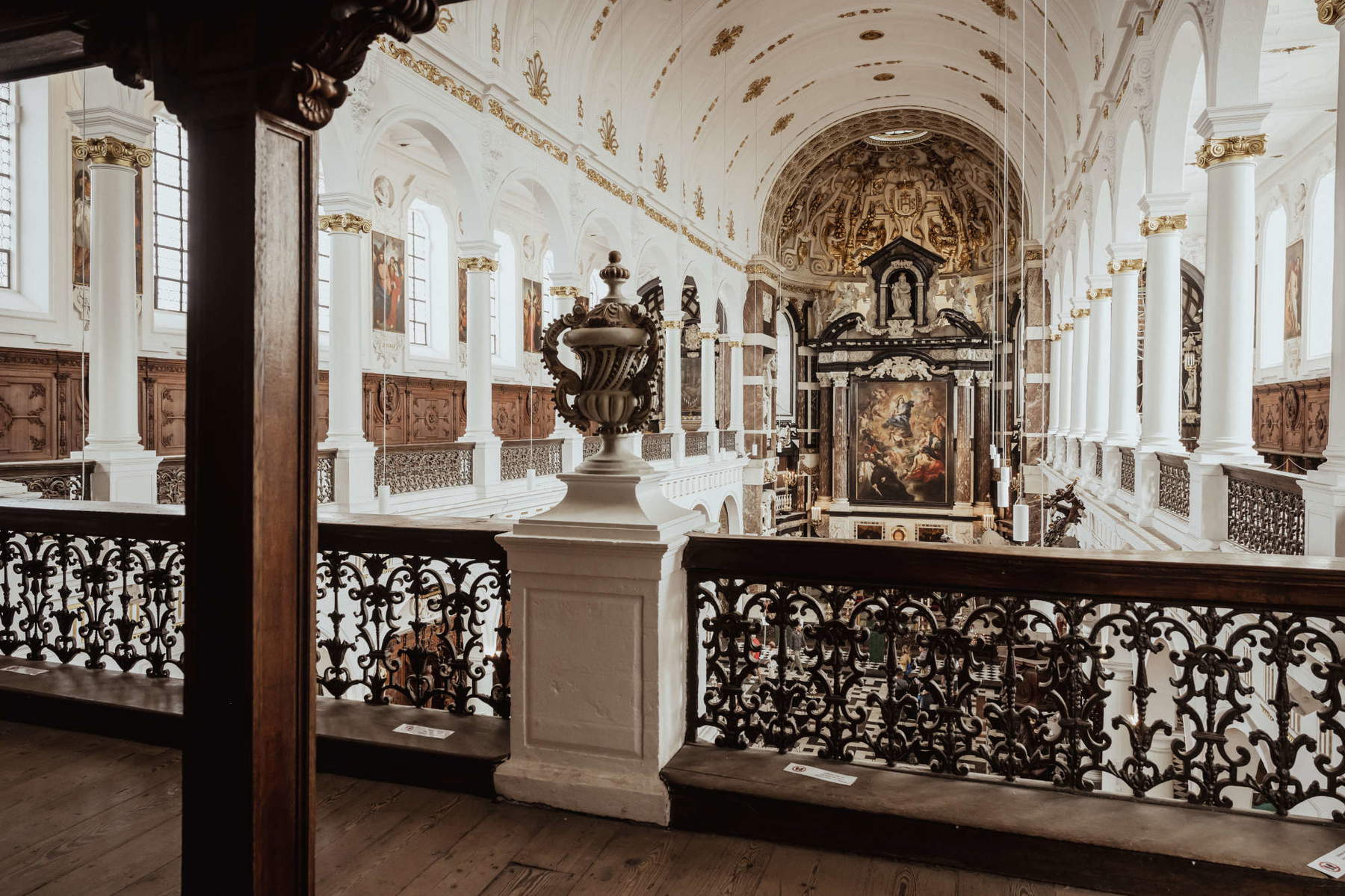
St. Paul’s Church is another must-see place for those who want to follow in the footsteps of Rubens in Antwerp, but not only: it is the only place, outside of museums, where works by all three stars of the Flemish seventeenth century (Rubens, Antoon van Dyck, and Jacob Jordaens) can be found. Here, among Baroque altars and monumental sculptures, is the Flagellation of Christ (1617) one of Rubens’ most dramatic and engaging works. The painting, made for the high altar, is striking for its emotional intensity, plastic rendering of the bodies and ability to convey the pathos of the Passion. The church, once attended by Dominicans, was one of the most active centers of the city’s religious life and provides an ideal context for understanding Rubens’s relationship with ecclesiastical patrons and the spiritual movements of his time. In addition to Rubens’ altarpiece, the church houses works by other major Flemish artists, offering a comprehensive overview of 17th-century sacred art in Antwerp. The visit, thanks to the presence of works by great masters, allows visitors to grasp the richness and complexity of the Flemish Baroque, in which Rubens’ painting plays a central role.
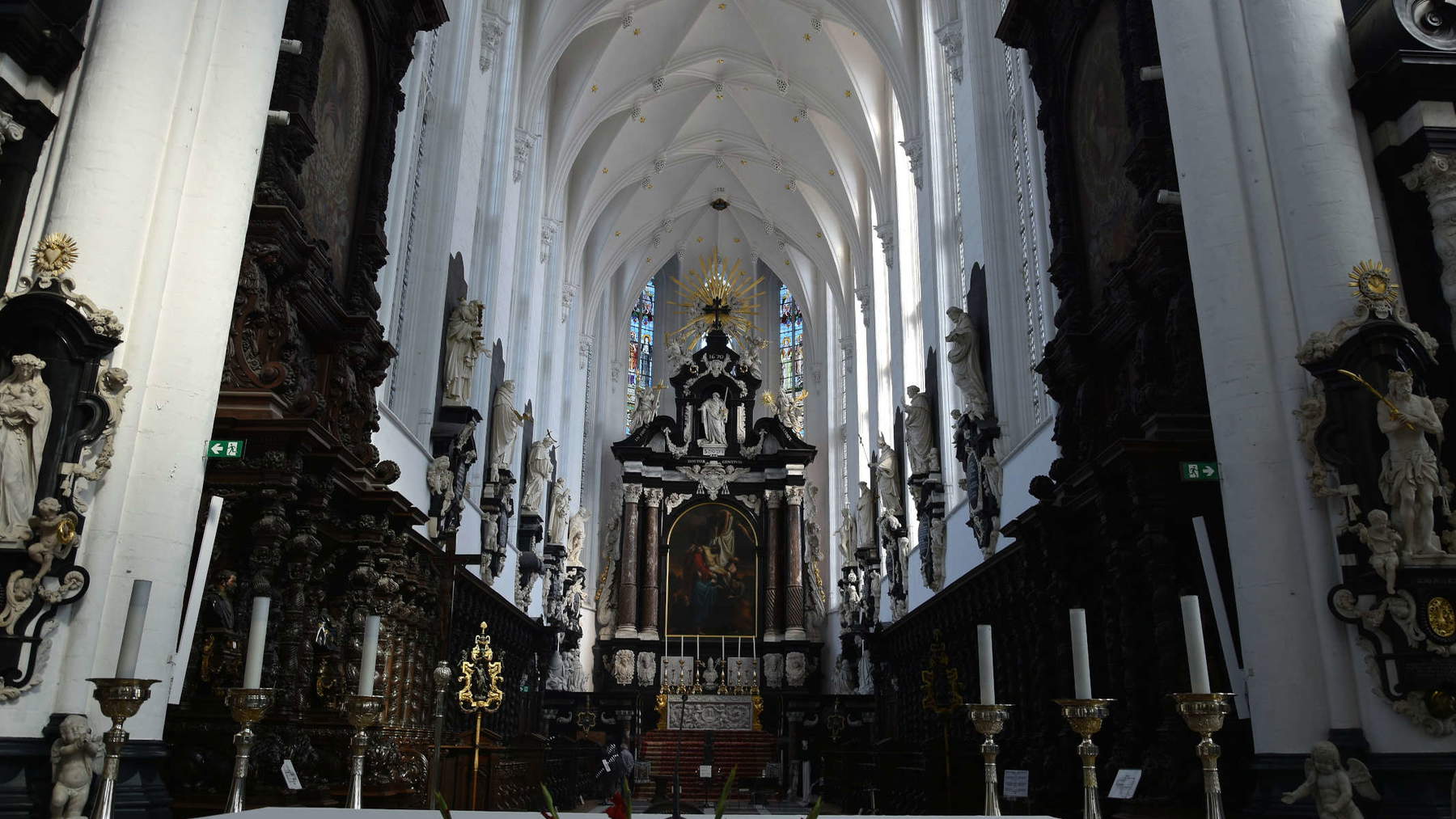
The Church of St. James is one of the most intimate and significant places to understand Rubens’ personal connection with Antwerp. It is home to the artist’s tomb, located in the family chapel and adorned with an altarpiece depicting the Madonna, painted by Rubens himself. The church, with its imposing architecture and rich interior decorations, provides a striking context for reflecting on the private and spiritual dimension of the master. The presence of Rubens’ tomb in the center of his funeral chapel makes St. James a destination for art lovers, but also a place of recollection and remembrance. On the altar, on the other hand, one can admire the Madonna surrounded by saints, another important work by the Flemish painter, painted for a commissioner still unknown to this day, but not delivered and therefore remained in the artist’s atelier: it was placed on the altar of his funerary chapel by his express will. To visit this church is to confront Rubens’ most personal legacy, discovering his relationship with death, faith and family, and grasping the human depth behind the artist’s myth.

The KMSKA, Antwerp’s Royal Museum of Fine Arts, is the city’s main museum and one of the most important in Europe for Flemish painting. It houses an extraordinary collection of works by Rubens, allowing visitors to trace all stages of his career, from his early youthful experiments to the masterpieces of his maturity. The museum offers an exhibition itinerary that places Rubens in dialogue with the other great masters of the 17th century, highlighting mutual influences and the artist’s central role in European visual culture. The rooms devoted to Rubens open up a journey into his poetics, including portraits, altarpieces, mythological and allegorical scenes. The KMSKA is the ideal place to delve into Rubens’ technique, style and evolution, but also to understand his impact on the history of art and the formation of modern taste.
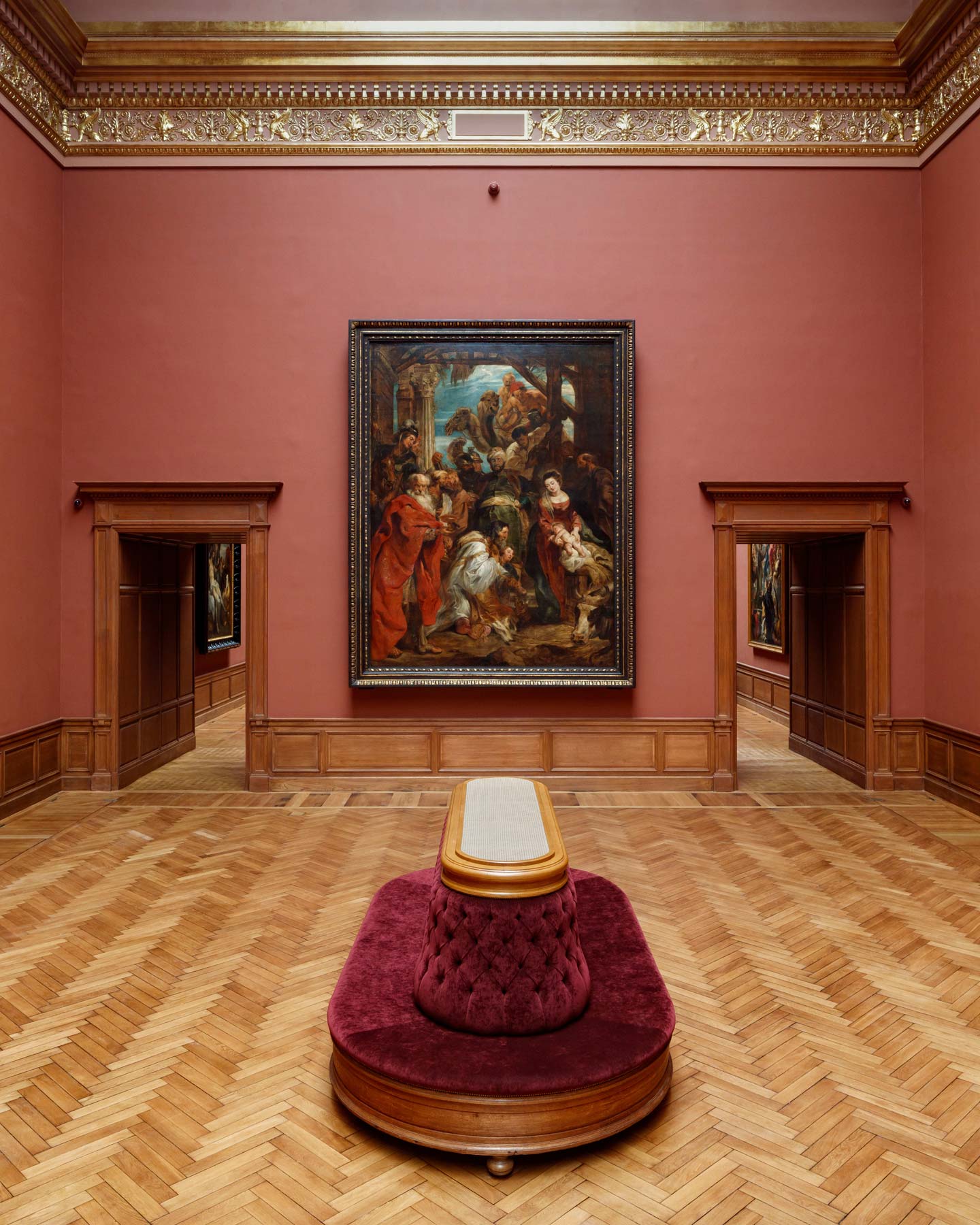
The church of St. Villibrordo is one of the lesser known, but no less significant, stops on the Rubensian itinerary in Antwerp. An altarpiece made by Rubens is preserved here, testifying to his ability to adapt Baroque language to the needs of popular devotion and local liturgy. The church, with its intimate atmosphere and understated decorations, provides an ideal context for appreciating the artist’s versatility and his relationship with the town community. Rubens’ presence at St. Villibrordo’s reveals a lesser-known aspect of his production, one related to minor commissions and the widespread diffusion of his art in the urban fabric of Antwerp. To visit this church is to discover a Rubens far removed from the splendor of the great cathedrals but equally capable of excitement and involvement.
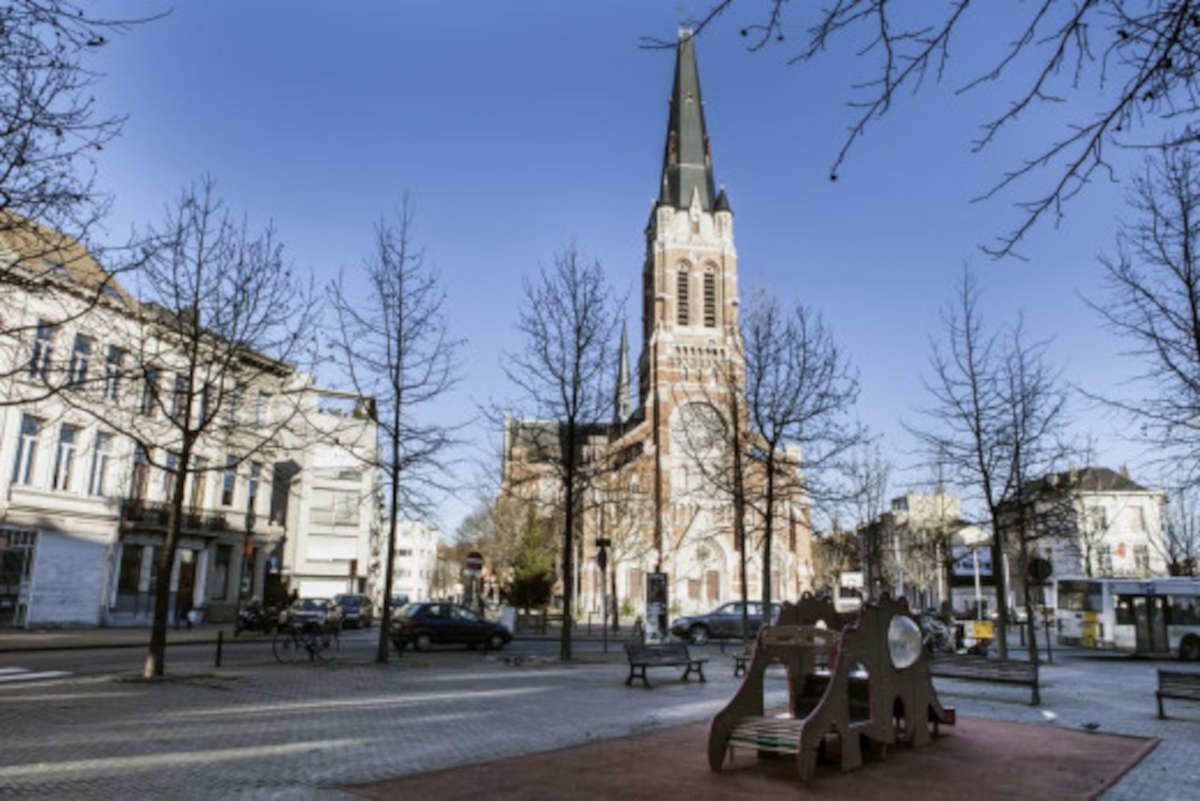
The Snijders & Rockoxhuis House is a historic home that chronicles the cultural and social life of 17th-century Antwerp through the figures of two friends and contemporaries of Rubens: the painter Frans Snijders and the collector Nicolaas Rockox, who was also mayor of Antwerp, as mentioned above. Here you can feel the atmosphere of the patrician houses of the time, amid period furnishings, art collections and evidence of daily life. Rubens often frequented this house, participating in meetings, debates and moments of conviviality that animated the city’s intellectual scene. In addition, Rubens created a number of works for his friend Rockox, donated following the mayor’s passing. However, two of them, Christ on the Cross and the Madonna in Adoration of the Sleeping Child , have returned and can be seen in their original context. The visit provides an understanding of the role of social and cultural networks in the formation of taste and the dissemination of Baroque art, but also uncovers Rubens’ more mundane and relational side. The Snijders & Rockoxhuis House is now a museum that offers a unique perspective on Antwerp society of the time, highlighting the dialogue between art, collecting, and friendship.
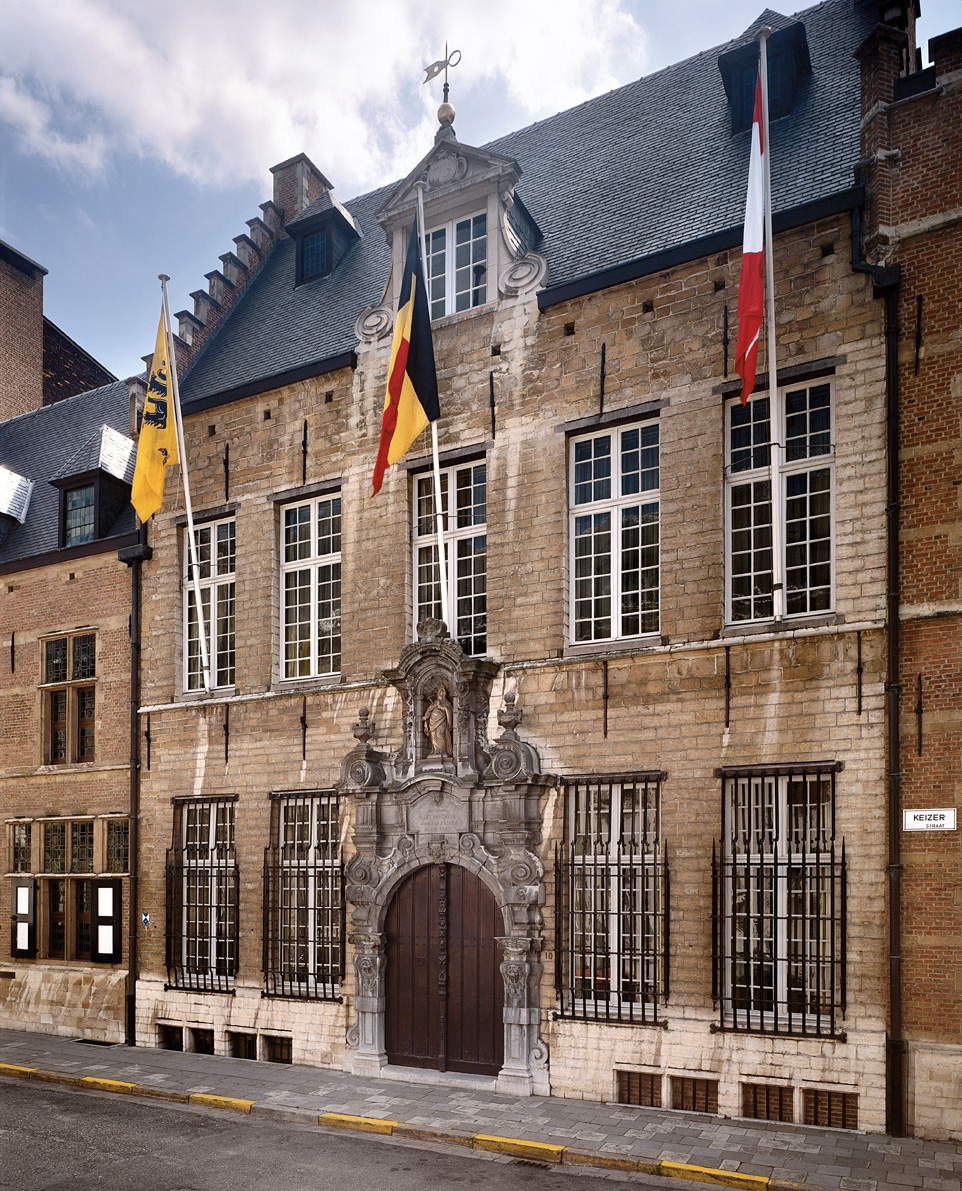
St. Andrew’s Church represents one of the key stops for those who want to learn about the connection between Rubens and the spirituality of his era. Located in the heart of Antwerp, this church is where Rubens had his children Clara Serena (in 1611) and Albert (in 1614) baptized. There are no works by the artist inside, yet the church, with its Gothic architecture and sumptuous furnishings, provides an ideal context for appreciating the impact Rubens’s art had on the artists of the next generation.In fact, the church was destroyed during the period of the iconoclastic rampage, and the subsequent decoration was entrusted to masters such as Otto van Veen and Maerten de Vos, who could not overlook Rubens’s role. However, Rubens is presumed to have collaborated in some way in the creation of Otto van Veen’s great altarpiece, the Martyrdom of St. Andrew.
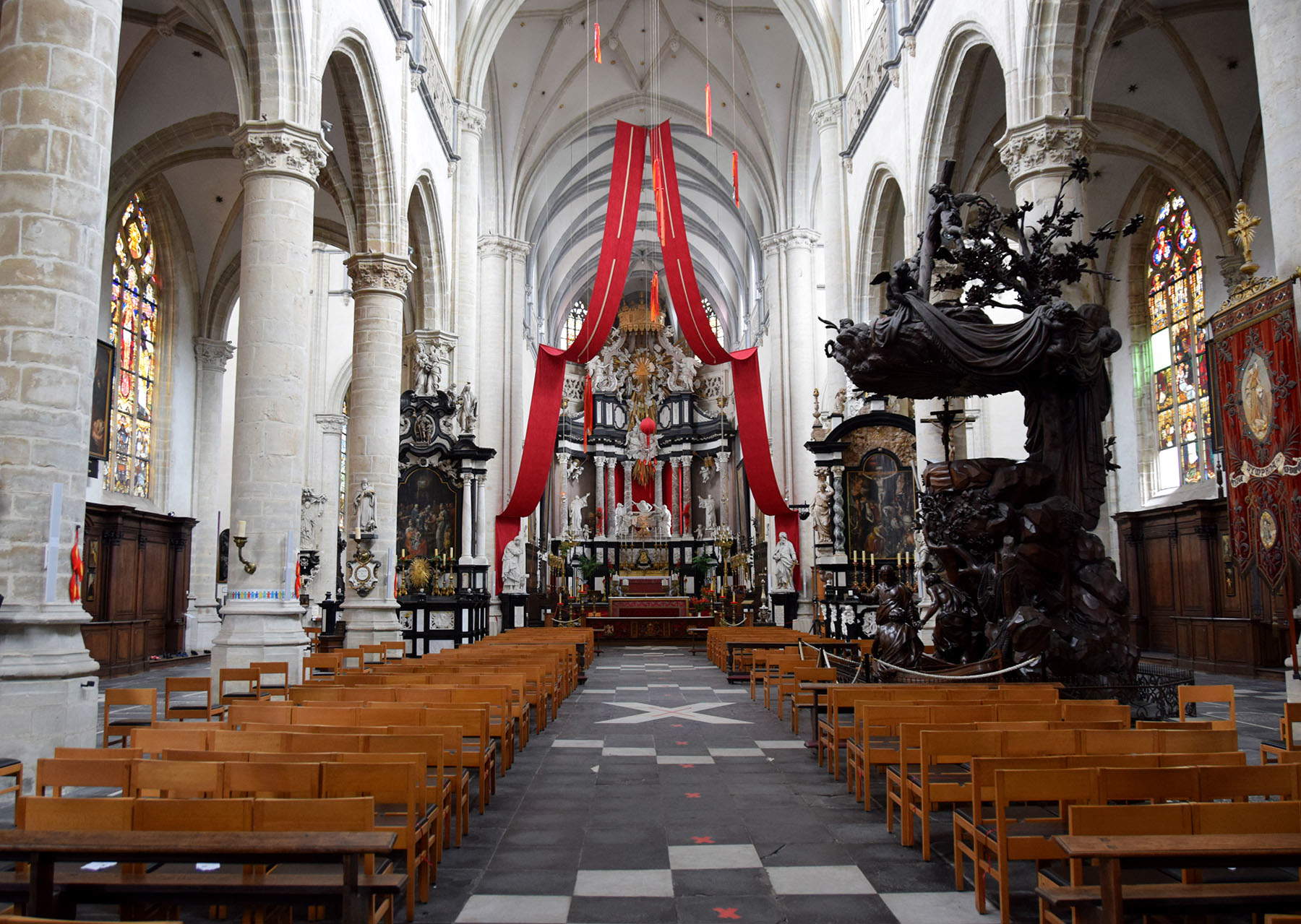
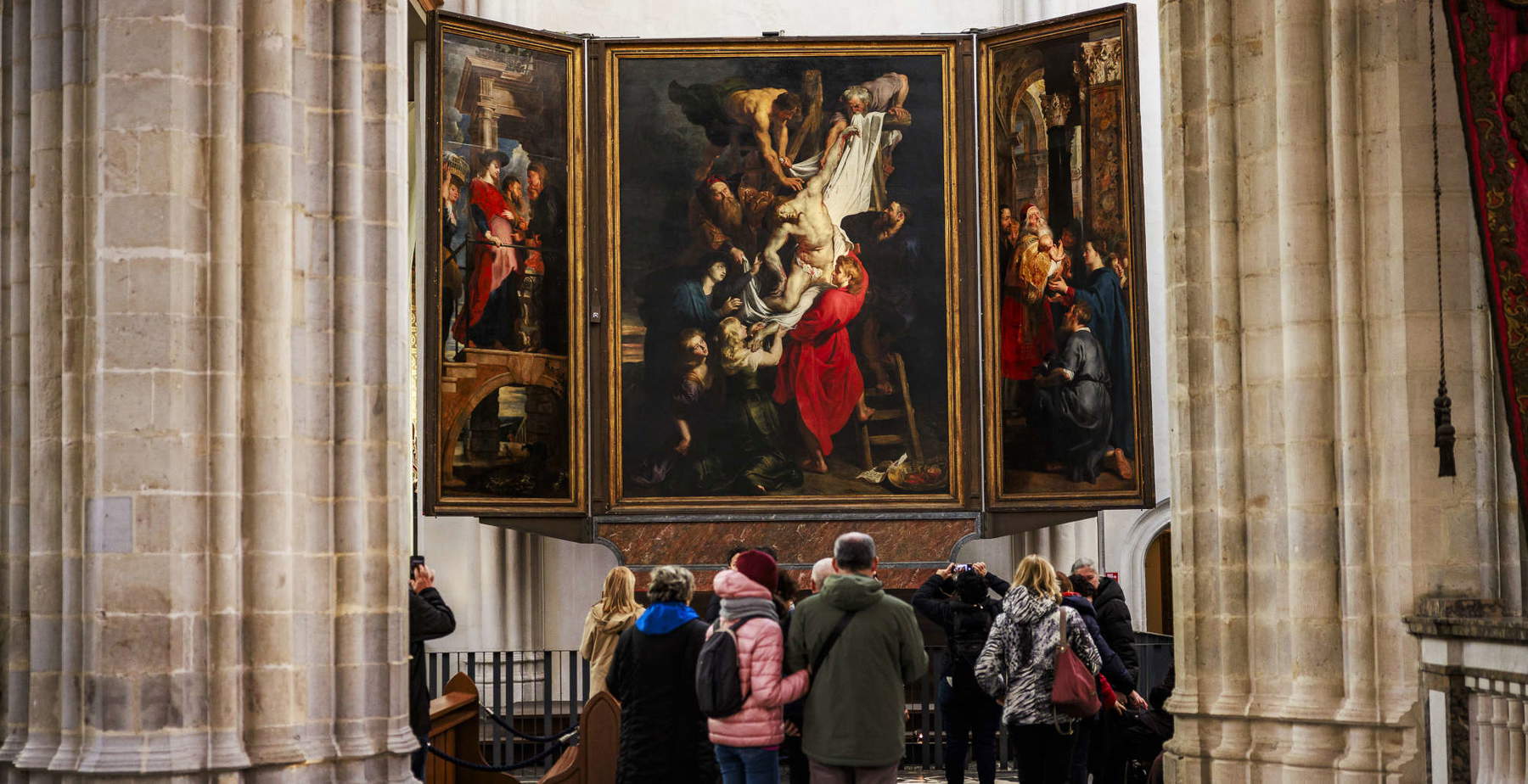 |
| Ten places to see and learn about Rubens in Antwerp |
Warning: the translation into English of the original Italian article was created using automatic tools. We undertake to review all articles, but we do not guarantee the total absence of inaccuracies in the translation due to the program. You can find the original by clicking on the ITA button. If you find any mistake,please contact us.